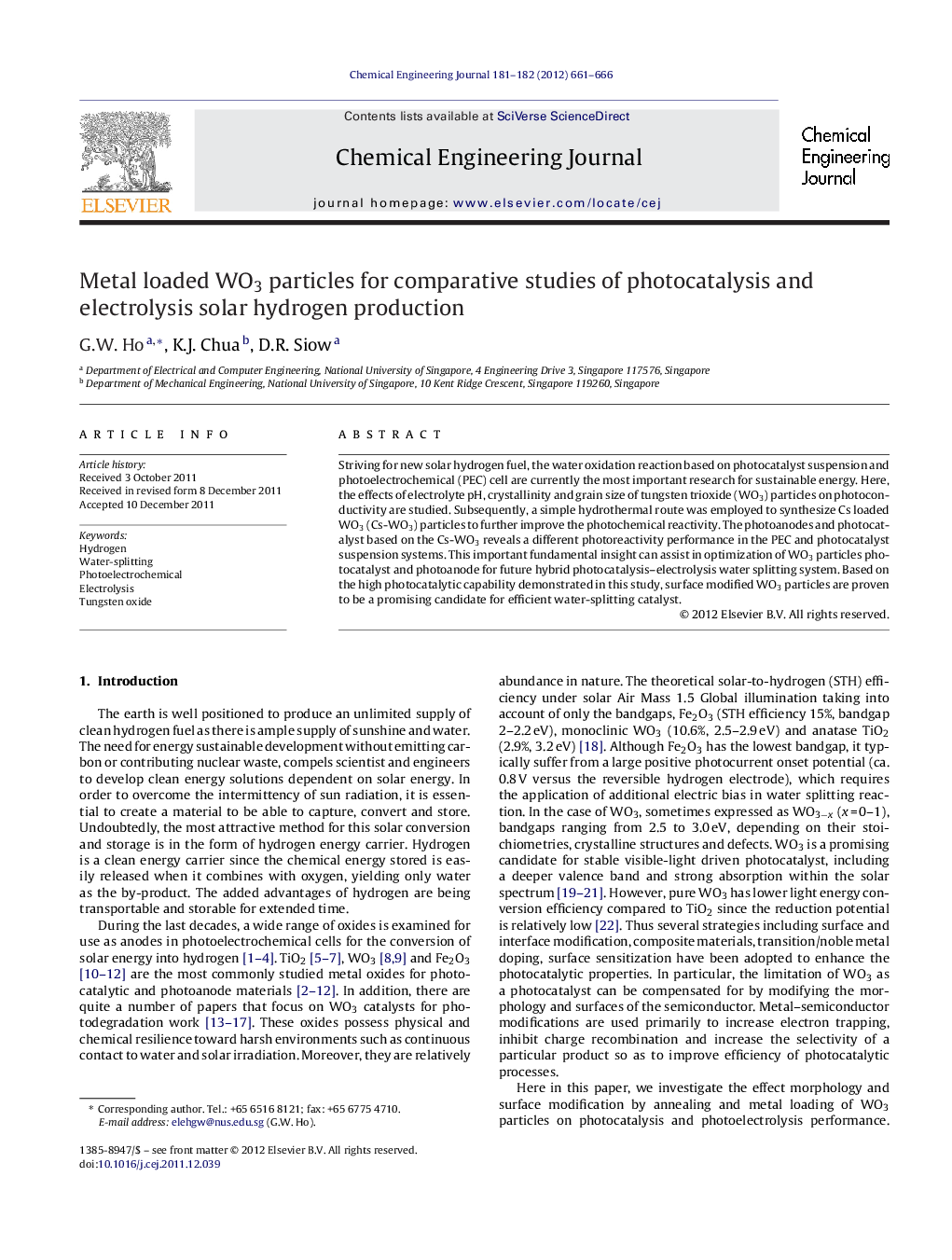| Article ID | Journal | Published Year | Pages | File Type |
|---|---|---|---|---|
| 150248 | Chemical Engineering Journal | 2012 | 6 Pages |
Striving for new solar hydrogen fuel, the water oxidation reaction based on photocatalyst suspension and photoelectrochemical (PEC) cell are currently the most important research for sustainable energy. Here, the effects of electrolyte pH, crystallinity and grain size of tungsten trioxide (WO3) particles on photoconductivity are studied. Subsequently, a simple hydrothermal route was employed to synthesize Cs loaded WO3 (Cs-WO3) particles to further improve the photochemical reactivity. The photoanodes and photocatalyst based on the Cs-WO3 reveals a different photoreactivity performance in the PEC and photocatalyst suspension systems. This important fundamental insight can assist in optimization of WO3 particles photocatalyst and photoanode for future hybrid photocatalysis–electrolysis water splitting system. Based on the high photocatalytic capability demonstrated in this study, surface modified WO3 particles are proven to be a promising candidate for efficient water-splitting catalyst.
► Incorporation of Cs nanoparticles with WO3 enhances its photocatalytic activity. ► Studies include the effects of electrolyte pH, crystallinity and grain size of tungsten trioxide (WO3) nanoparticles on photoconductivity. ► Surface modification of WO3 nanoparticles promotes efficient water-splitting. ► Key results offer opportunities for the design of new hybrid photocatalysis–electrolysis water splitting system.
